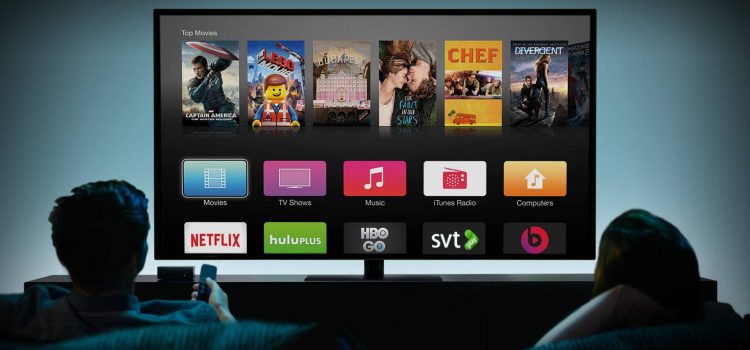
Introduction
The advent of streaming services has fundamentally transformed the way we consume television content. This shift has not only impacted viewers but has also revolutionized the strategies advertisers employ to reach their target audiences. This article delves into how streaming TV ads are reshaping the advertising landscape, offering insights into the benefits, challenges, and future trends of this dynamic industry.
The Evolution of TV Advertising

-
Traditional TV Advertising
Traditional TV advertising has long been a cornerstone of marketing strategies for brands worldwide. However, it comes with several limitations, such as broad audience targeting, high costs, and limited performance metrics. Advertisers often relied on Nielsen ratings and demographic data to gauge the effectiveness of their campaigns, which provided only a general overview of audience engagement.
-
The Rise of Streaming Services
The rise of streaming services like Netflix, Hulu, Amazon Prime Video, and Disney+ has disrupted the traditional TV model. These platforms offer on-demand content, allowing viewers to watch their favorite shows and movies at their convenience. This shift has led to a decline in traditional TV viewership and a corresponding rise in streaming TV ads.
The Move to Streaming Television
As services like Netflix, Hulu, Amazon Prime Video, and Disney+ gain popularity, traditional cable subscriptions are declining. More than 30% of American households have opted to cut the cord in favor of streaming, which offers flexibility and convenience. This transition means advertisers must rethink their approaches to reach their audiences effectively.
Targeted Advertising: A New Approach
One of the biggest benefits of streaming platforms is their ability to target ads specifically to individual viewers. Unlike traditional TV ads, which aim for a broad audience, streaming services use viewer data to deliver personalized advertisements. This means brands can reach the right audience with the right message, making their advertising efforts more effective.
Advantages of Streaming TV Ads

-
Targeted Advertising
One of the most significant advantages of streaming TV ads is the ability to target specific audiences. Streaming platforms collect vast amounts of data on viewer preferences, behaviors, and demographics. This data allows advertisers to create highly targeted campaigns that reach the right audience at the right time, increasing the likelihood of engagement and conversion.
-
Data-Driven Insights
Streaming services provide advertisers with detailed analytics and performance metrics. These insights enable brands to measure the effectiveness of their campaigns in real-time and make data-driven decisions to optimize their strategies. Metrics such as view-through rates, click-through rates, and audience demographics offer a comprehensive understanding of campaign performance.
-
Cost-Effectiveness
Compared to traditional TV advertising, streaming TV ads can be more cost-effective. Advertisers can allocate their budgets more efficiently by targeting specific audiences and minimizing waste. Additionally, the ability to track and measure campaign performance allows for continuous optimization, ensuring that advertising dollars are spent wisely.
-
Enhanced Viewer Experience
Streaming TV ads can be less intrusive than traditional TV commercials. Platforms like Hulu and Peacock offer ad-supported tiers with limited commercial interruptions, providing a more seamless viewing experience for users. Advertisers can also create interactive and engaging ad formats that capture viewers’ attention without disrupting their content consumption.
Innovative Ad Formats
Streaming platforms are also introducing new and exciting ad formats that engage viewers in fresh ways. For instance, interactive ads allow viewers to click and engage directly with the advertisement. Additionally, the concept of binge-watch ads targets viewers during marathon sessions, creating a more immersive experience. These innovative formats can boost viewer engagement and make advertising more effective.
The Importance of Data
Data plays a crucial role in how advertising works on streaming platforms. These services gather vast amounts of information about viewer behavior, helping advertisers measure how well their campaigns are performing. This data-driven approach allows brands to adjust their strategies quickly and efficiently, ensuring they get the best return on investment.
The Rise of Ad-Supported Models
As more viewers turn to ad-supported streaming services, advertisers have new opportunities to connect with audiences. Many platforms are now offering free or lower-cost subscription options that include advertisements. This trend means that brands can reach a broader audience, as viewers who may not have subscribed to premium services can still engage with content. As a result, advertisers can explore new strategies to capture the attention of these viewers while maintaining relevance.
Challenges of Streaming TV Ads

-
Fragmented Audience
While streaming services offer targeted advertising opportunities, the fragmented nature of the streaming landscape can pose challenges. Viewers are spread across multiple platforms, making it difficult for advertisers to reach a broad audience. Advertisers must carefully select the right platforms and develop cross-channel strategies to maximize their reach.
-
Ad Blockers and Subscription Models
The rise of ad blockers and subscription models poses another challenge for streaming TV ads. Many viewers opt for ad-free subscription plans to avoid interruptions, reducing the potential reach of ad-supported content. Advertisers must find creative ways to engage audiences and deliver value through their ads to overcome this hurdle.
-
Privacy Concerns
The use of data for targeted advertising raises privacy concerns among consumers. Streaming platforms must adhere to strict data privacy regulations and ensure transparency in their data collection practices. Advertisers must also be mindful of these concerns and prioritize user privacy to build trust with their audiences.
Future Trends in Streaming TV Ads

As streaming continues to grow, the future of TV advertising looks promising but also complex. Brands need to stay flexible and adapt their advertising strategies to this evolving landscape. With advances in artificial intelligence (AI) and machine learning, advertisers will have even better targeting tools to reach specific audiences effectively.
-
Programmatic Advertising
Programmatic advertising is poised to play a significant role in the future of streaming TV ads. This automated approach uses algorithms and data to buy and place ads in real-time, optimizing targeting and performance. Programmatic advertising allows for greater efficiency and scalability, enabling advertisers to reach their desired audiences more effectively.
-
Interactive and Shoppable Ads
Interactive and shoppable ads are gaining traction in the streaming TV ad space. These ad formats encourage viewer engagement by allowing users to interact with the content, such as clicking on products to make purchases directly from the ad. This seamless integration of advertising and e-commerce enhances the viewer experience and drives conversions.
-
Advanced Targeting Techniques
As streaming platforms continue to collect and analyze data, advanced targeting techniques will become more sophisticated. Advertisers will be able to leverage artificial intelligence and machine learning to predict viewer preferences and deliver highly personalized ads. This level of precision targeting will increase the relevance and effectiveness of streaming TV ads.
-
Cross-Platform Integration
The future of streaming TV ads will likely involve greater cross-platform integration. Advertisers will need to develop cohesive strategies that span multiple streaming services and devices, ensuring consistent messaging and maximizing reach. This approach will require collaboration between streaming platforms, advertisers, and technology providers to create a seamless and unified advertising ecosystem.
Comparative Table: Traditional TV Ads vs. Streaming TV Ads
| Feature | Traditional TV Ads | Streaming TV Ads |
| Targeting | Broad audience | Highly targeted based on data |
| Measurement | Limited metrics | Detailed analytics and metrics |
| Engagement | Passive consumption | Interactive options (e.g., clickable ads) |
| Flexibility | Fixed schedules | On-demand placement |
| Cost | Generally higher rates | Variable pricing based on targeting |
Analysis Table: Key Ad Formats in Streaming
| Ad Format | Description | Advantages |
| Interactive Ads | Ads allowing viewer interaction | Higher engagement and brand recall |
| Pre-Roll Ads | Ads shown before content | Captures attention before viewing |
| Mid-Roll Ads | Ads placed within shows | Seamless integration into viewing |
| Post-Roll Ads | Ads shown after content | Effective for brand reinforcement |
| Sponsored Content | Content created in partnership with brands | Enhanced storytelling and engagement |
Conclusion
Streaming TV ads are revolutionizing the advertising landscape, offering unparalleled targeting capabilities, data-driven insights, and enhanced viewer experiences. While challenges such as audience fragmentation, ad blockers, and privacy concerns exist, the benefits of streaming TV ads far outweigh the drawbacks. As the industry continues to evolve, advertisers must stay ahead of the curve by embracing new technologies and trends to create effective and engaging campaigns. The future of TV advertising is undoubtedly digital, and streaming TV ads are at the forefront of this transformation.









